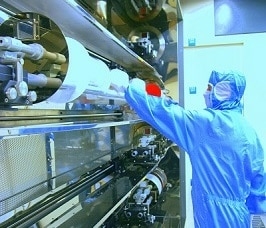source: Murata news
updated October 18, 2016 – Murata Manufacturing Co., Ltd., (“Murata”) today announced that Murata Electronics Europe B.V., a wholly-owned subsidiary of Murata has completed the acquisition of IPDiA S.A. (“IPDiA”), a 3D silicon capacitor technology pioneer headquartered in France, and IPDiA has become a subsidiary of Murata as October 17.
As a result of this acquisition, IPDiA will be integrated into Murata, and IPDiA’s products and solutions will be commercialized as part of Murata’s product portfolio. This acquisition enhances Murata’s position as the leading provider of high reliability capacitors. It is part of Murata’s strategy to strengthen its core business within the communication (mobile) market, and to expand into new applications within the automotive and medical markets.
This acquisition will enhance Murata’s position as the leading provider of high reliability capacitors. It is part of Murata’s strategy to strengthen its core business within the communication (mobile) market, and to expand into new applications within the automotive and medical markets. IPDiA, headquartered in Caen, France, was formed in 2009 and has around 130 employees today. The company is dedicated to the manufacturing of leading edge Integrated Passive Devices, specializing in silicon sub-mounts for lighting and 3D silicon capacitors for medical, industrial, communication and high reliability applications.The company operates design centers, sales and marketing offices and a manufacturing facility (silicon wafer FAB) certified ISO 9001 / 14001 / 18001 as well as ISO TS 16949 for the automotive market and ISO 13485 for medical devices.
As a result of this acquisition, IPDiA will be integrated into Murata, and IPDiA’s products and solutions will be commercialized as part of Murata’s product portfolio.
“Combining IPDiA’s 3D silicon capacitor technologies with Murata’s current technologies and product portfolio will enable us to expand our combined offering and meet our customers’ high reliability requirements, such as high temperature or high voltage, in automotive and other demanding markets”, says Toru Inoue, Executive Vice President, Components Business Unit, Murata.
In addition, Franck Murray, IPDiA CEO commented, “In the last 7 years, we have worked intensively to establish and strengthen our presence in the electronics industry. IPDiA’s patented technology has enabled silicon passive components to be considered as a superior solution in specific markets where high performance and miniaturization are required. We wish to benefit from Murata’s world recognized expertise and sales force to further expand our products and business. We look forward to working with Murata to enhance their leading position in the passive market”.
IPDiA in brief
IPDiA is a leading manufacturer of Integrated Passive Devices. Its technology has been adopted by world leaders in medical electronics, semiconductor area and high reliability industry.
IPDiA portfolio includes silicon capacitors from pF to tens of µF with:
- High Reliability Medical and Automotive Grade Capacitors;
- Low Profile Capacitors < 80 µm thin for decoupling inside critical space application;
- High Temperature Capacitors (250°C) with very high stability;
- Ultra Broadband Capacitors (60+GHz);
- 2D/2.5D Silicon Interposers for integration in SiP or MCM;
- Passive component networks for integration in module or on board.
For more information, please visit IPDiA website: www.ipdia.com.
Murata in Brief
Murata Manufacturing Co., Ltd. is a worldwide leader in the design, manufacture and sale of ceramic-based passive electronic components & solutions, communication modules and power supply modules. Murata is committed to the development of advanced electronic materials and leading edge, multi-functional, high-density modules. The company has employees and manufacturing facilities throughout the world. For more information, visit Murata’s website at www.murata.com































